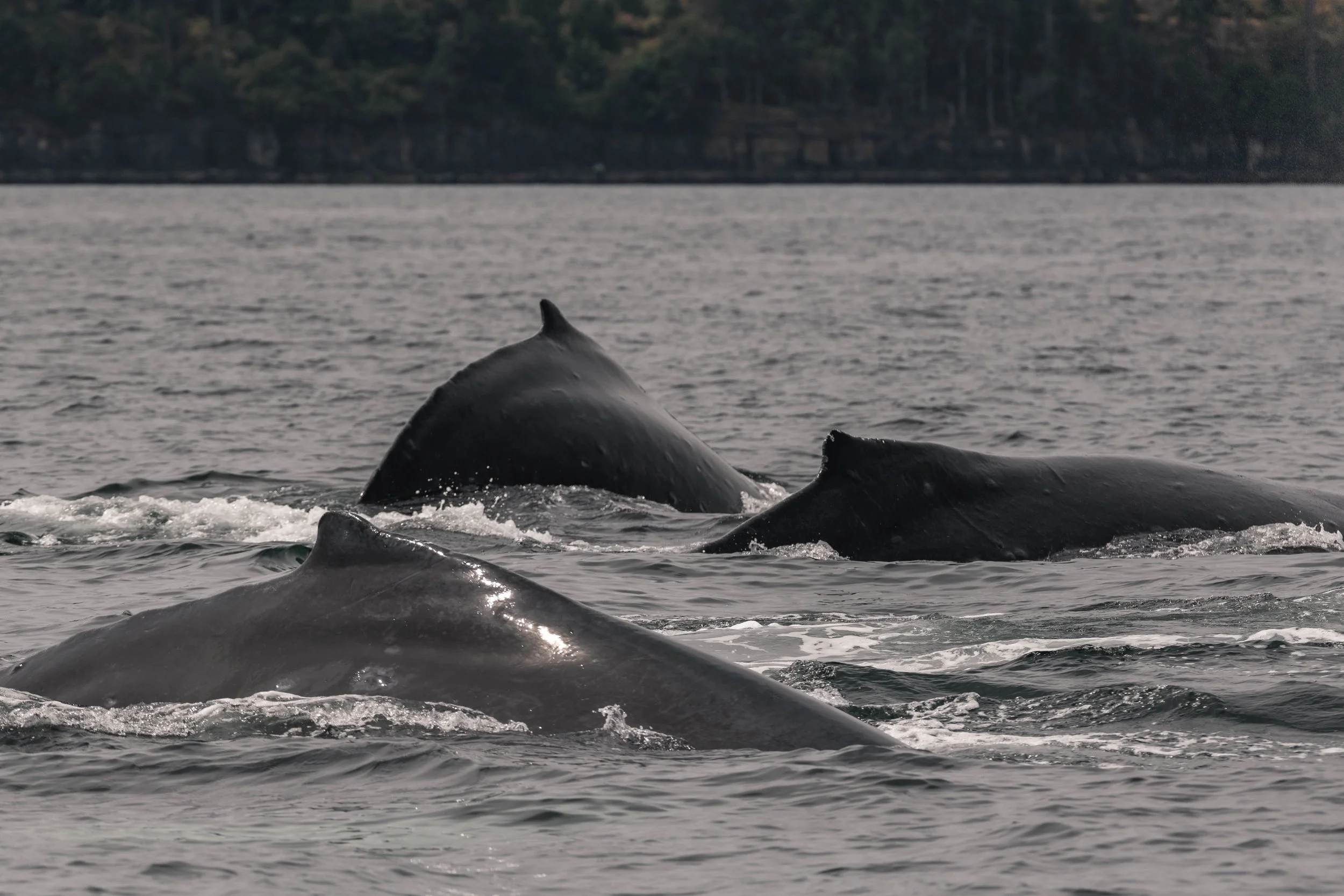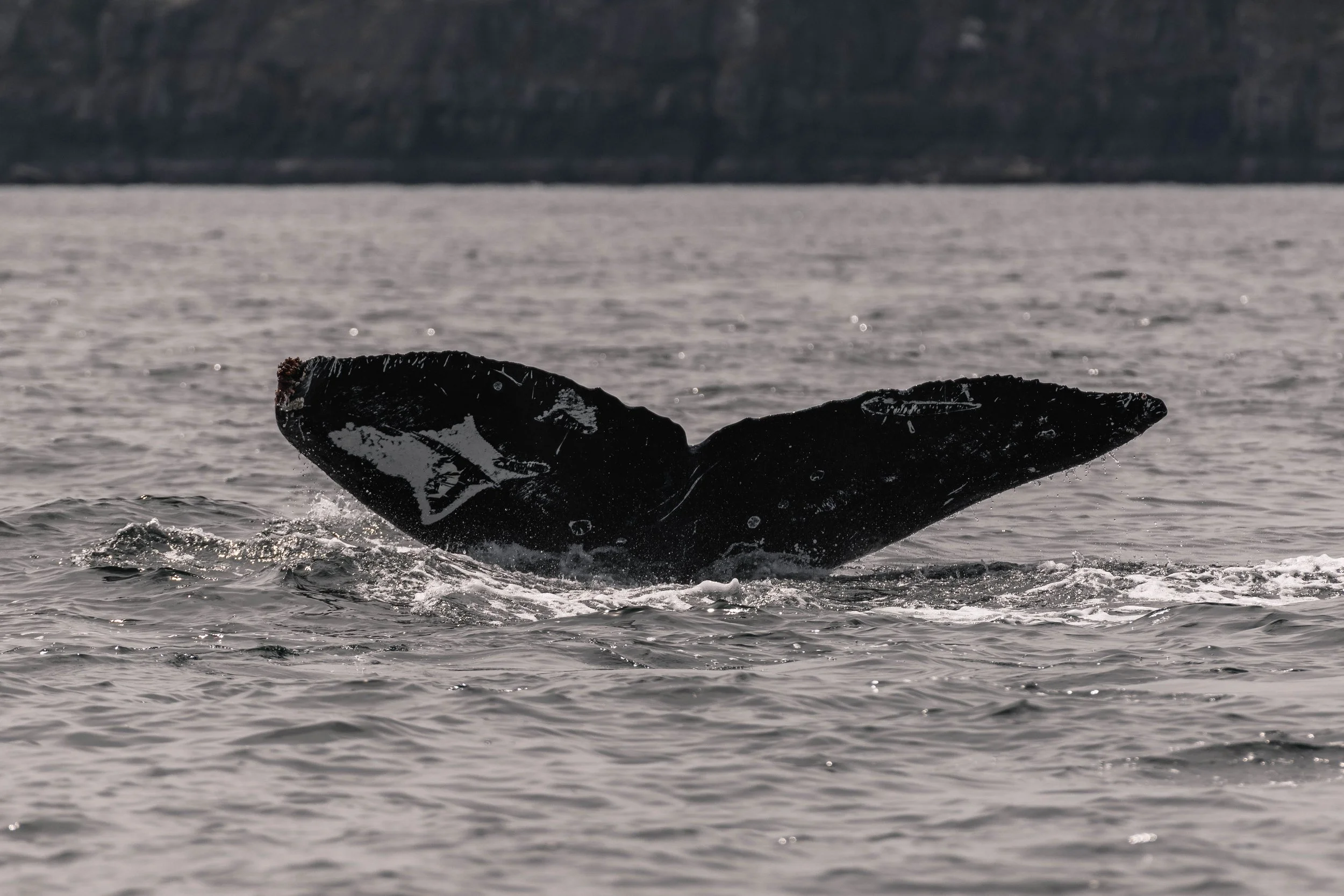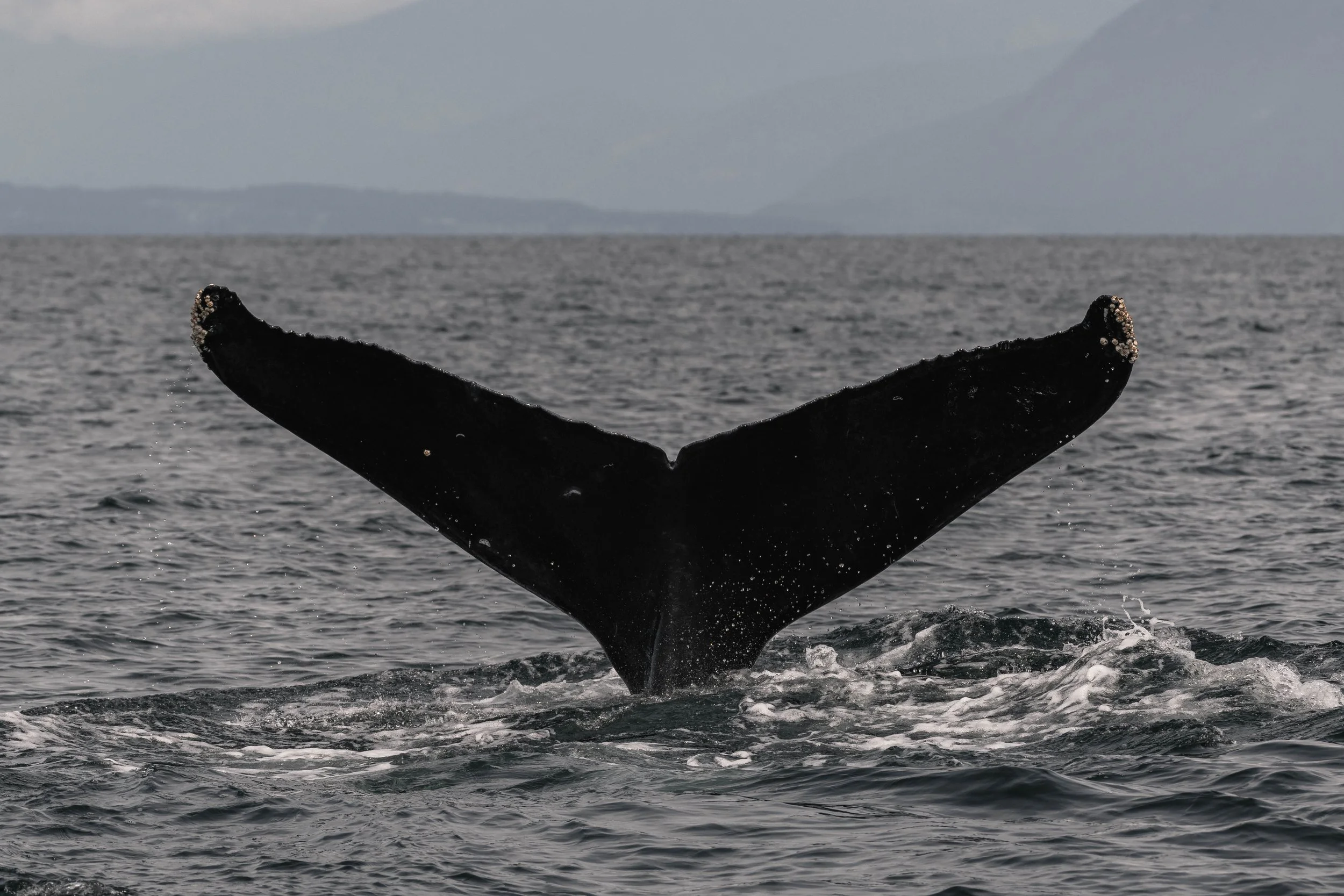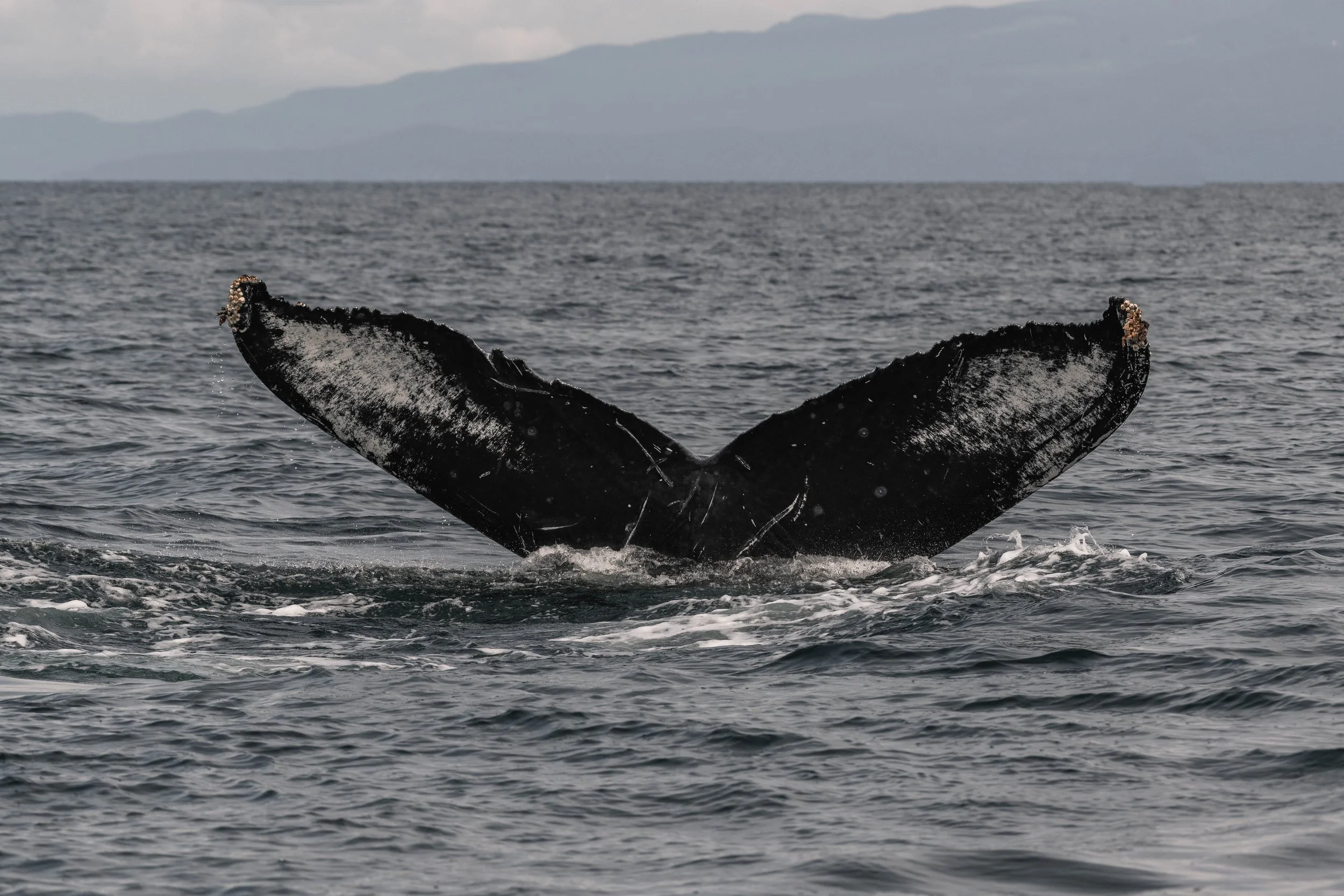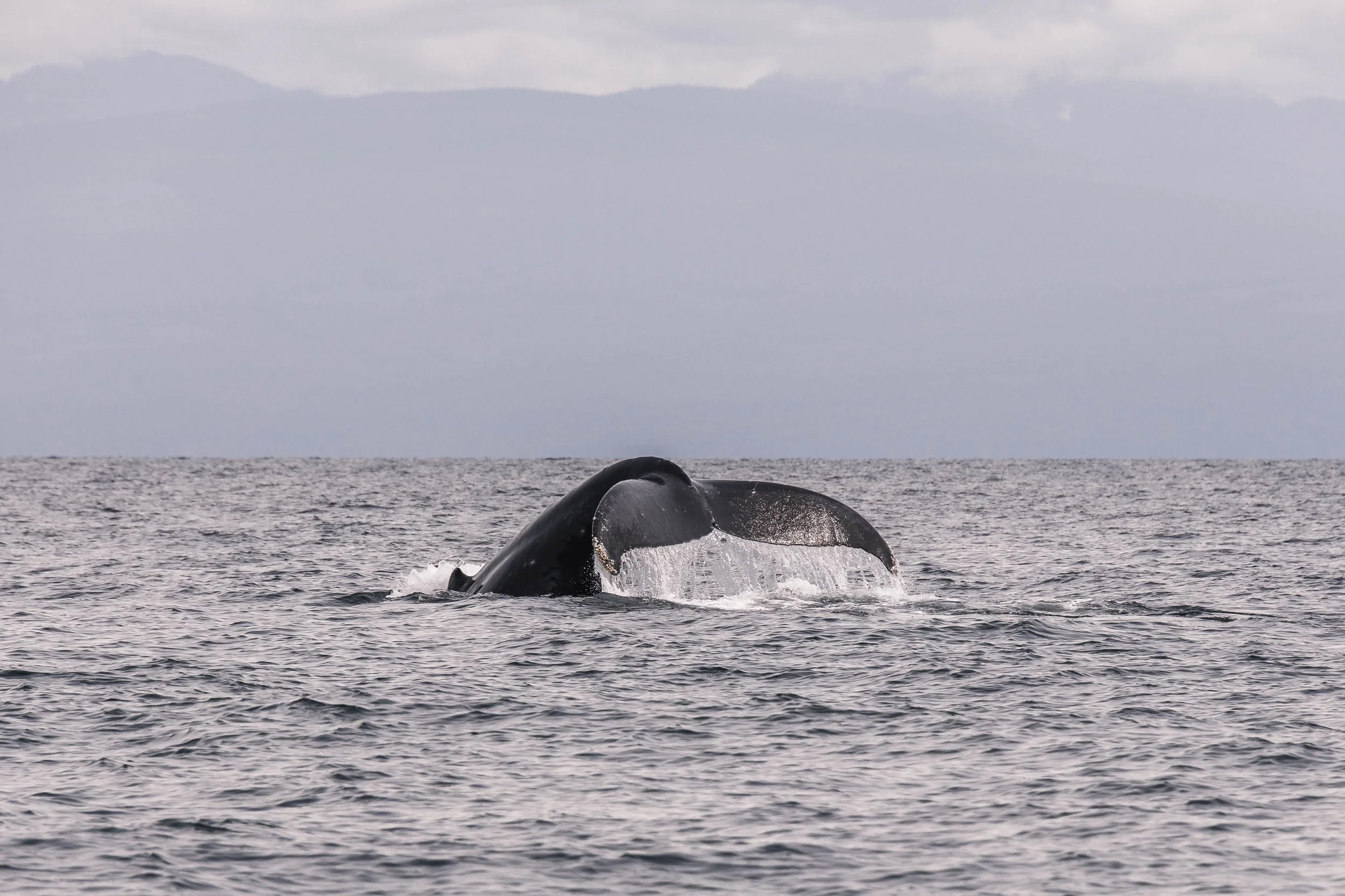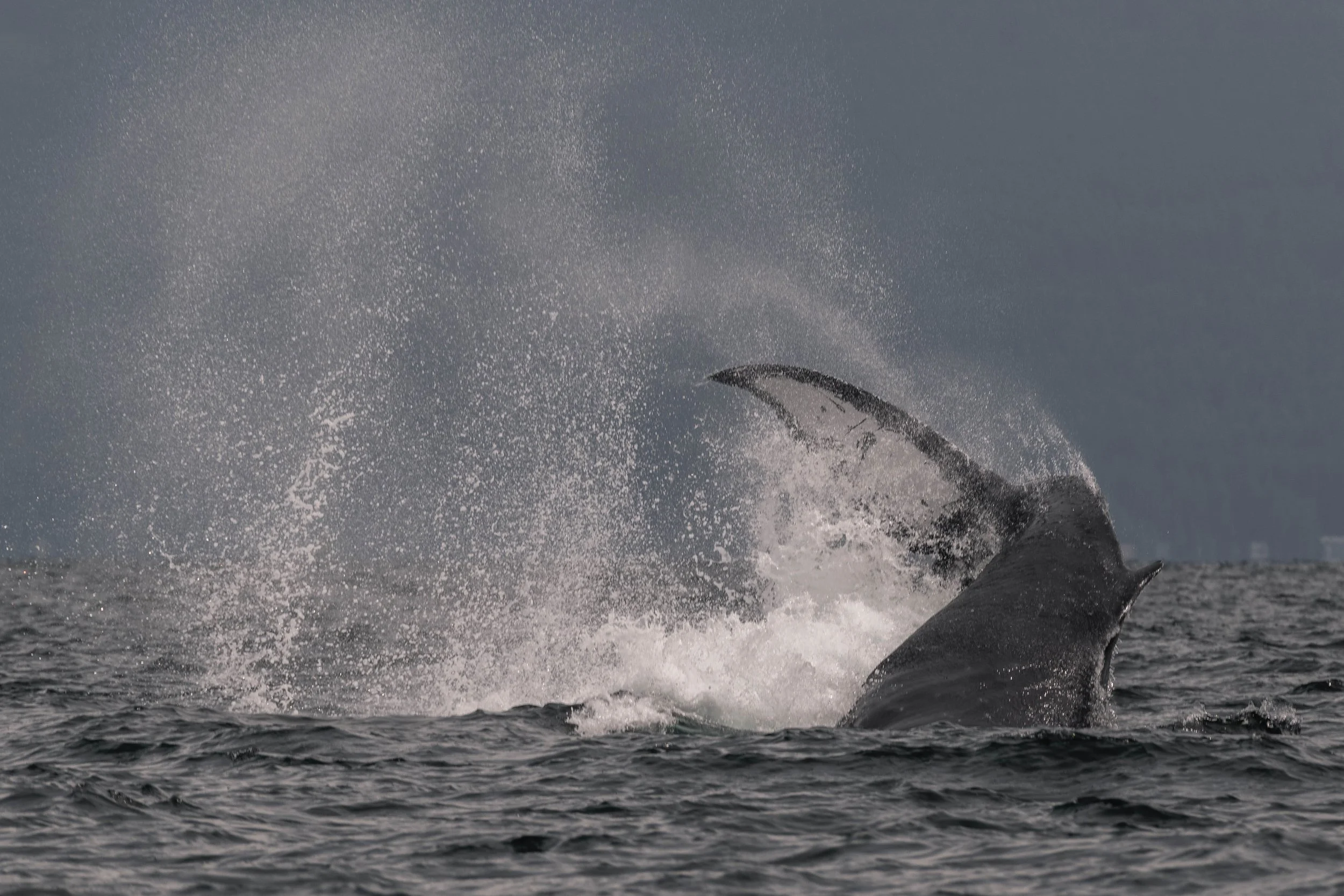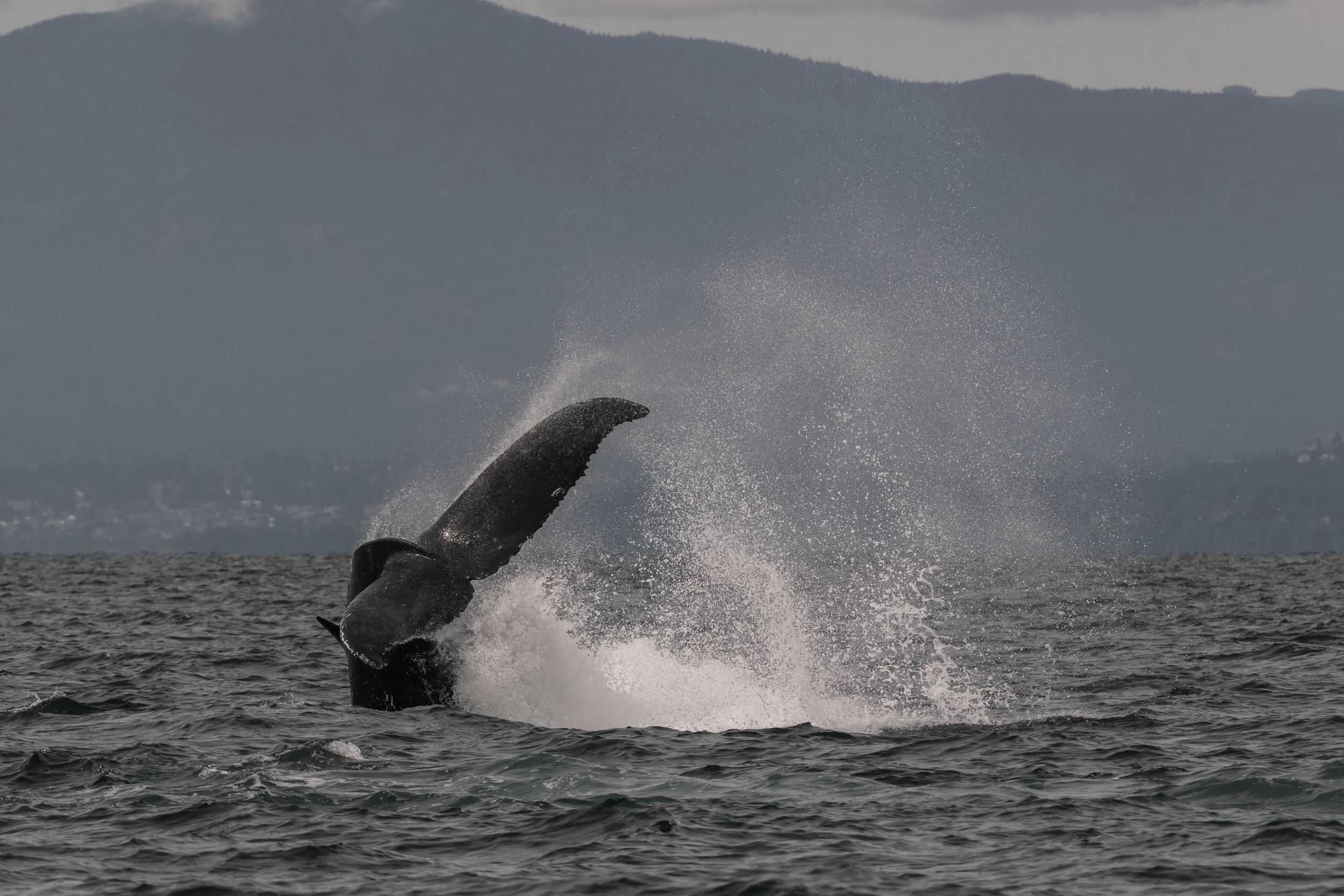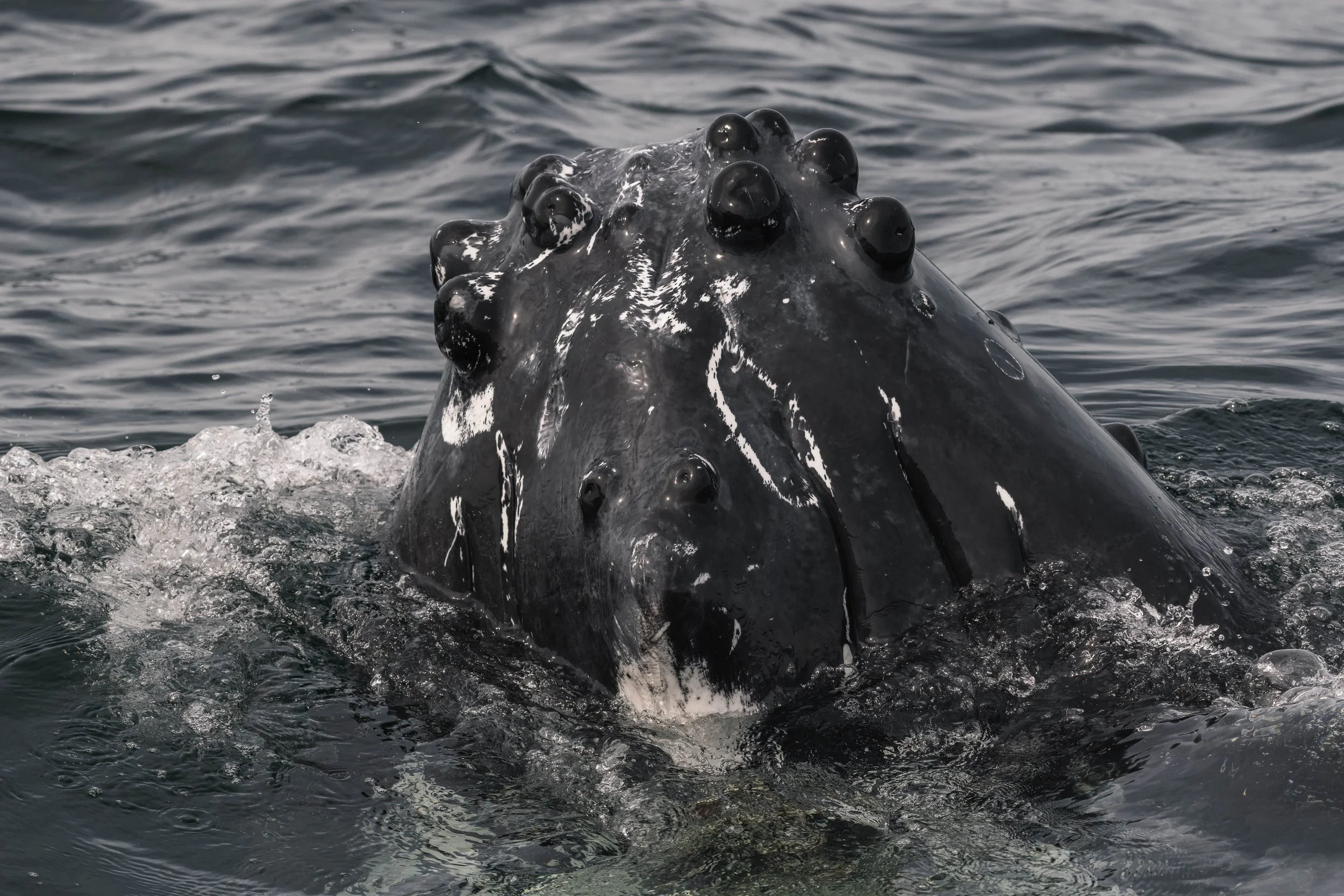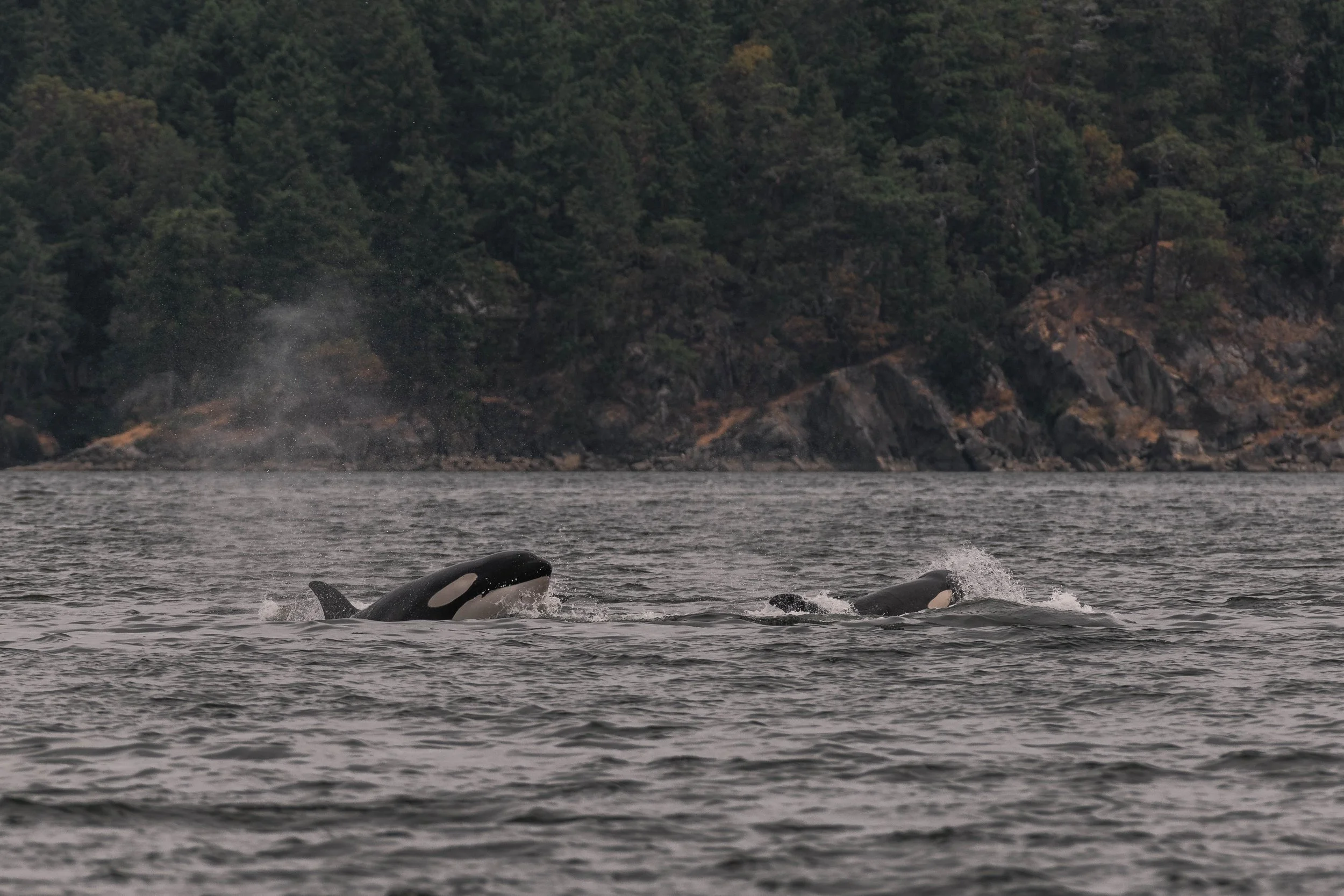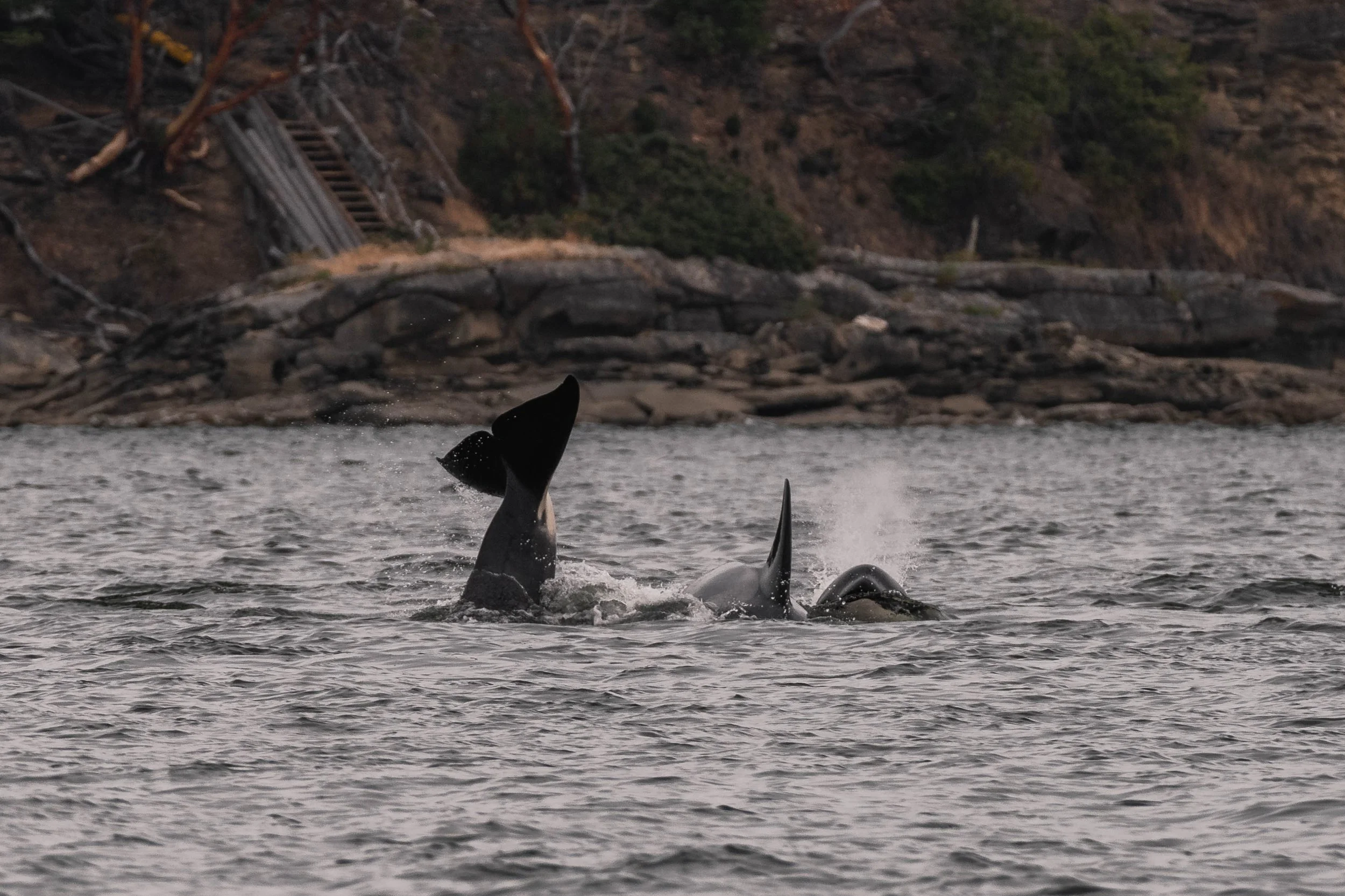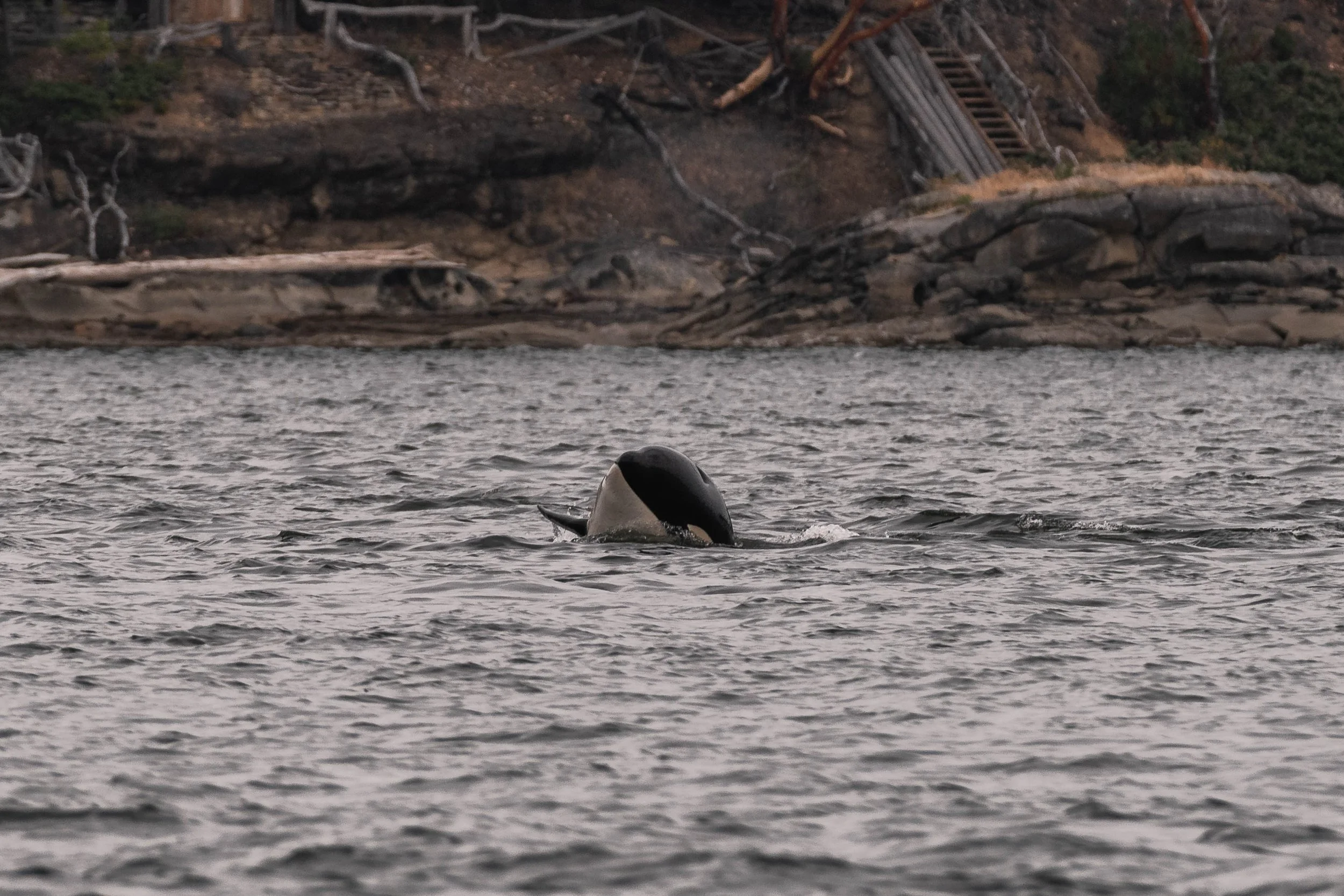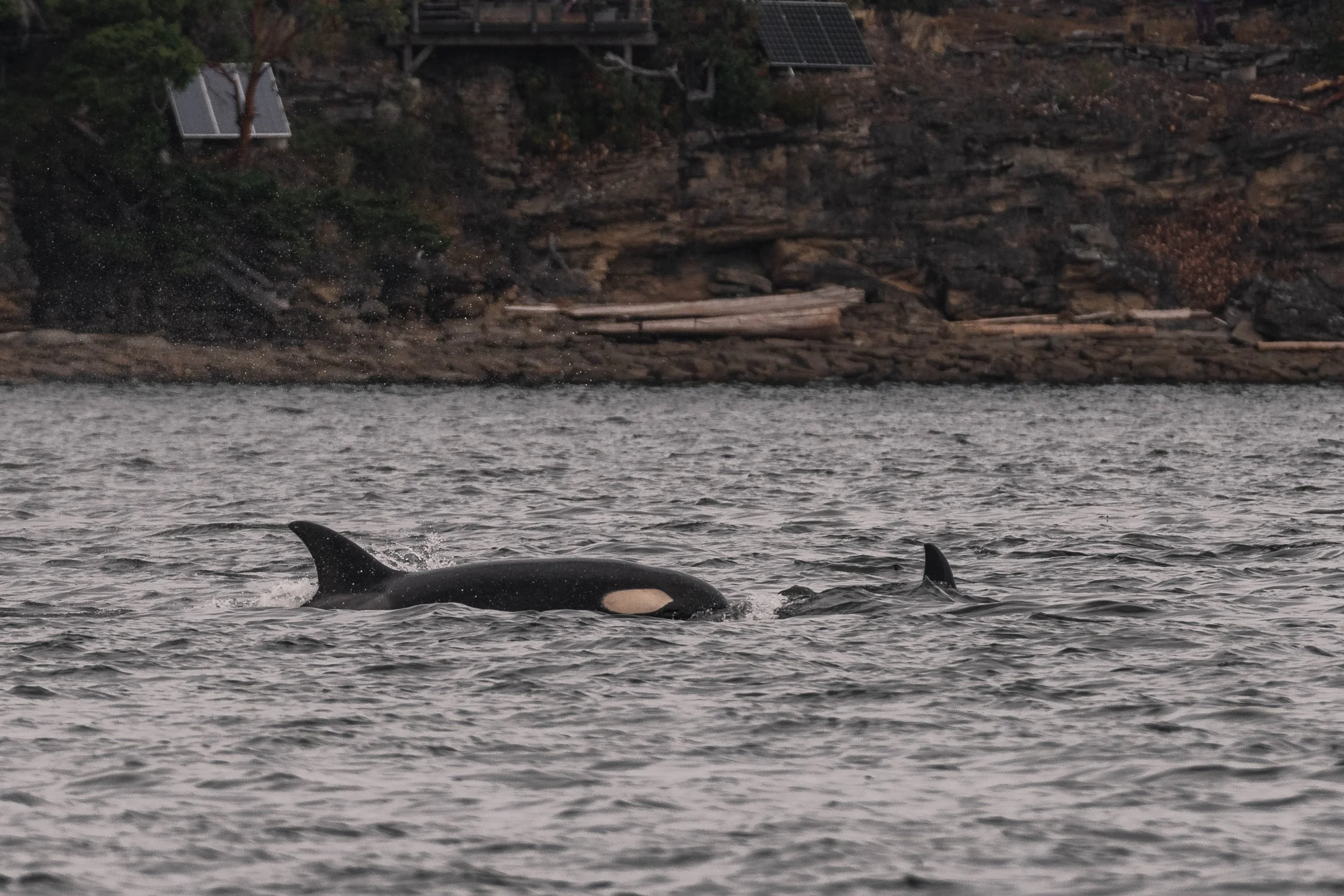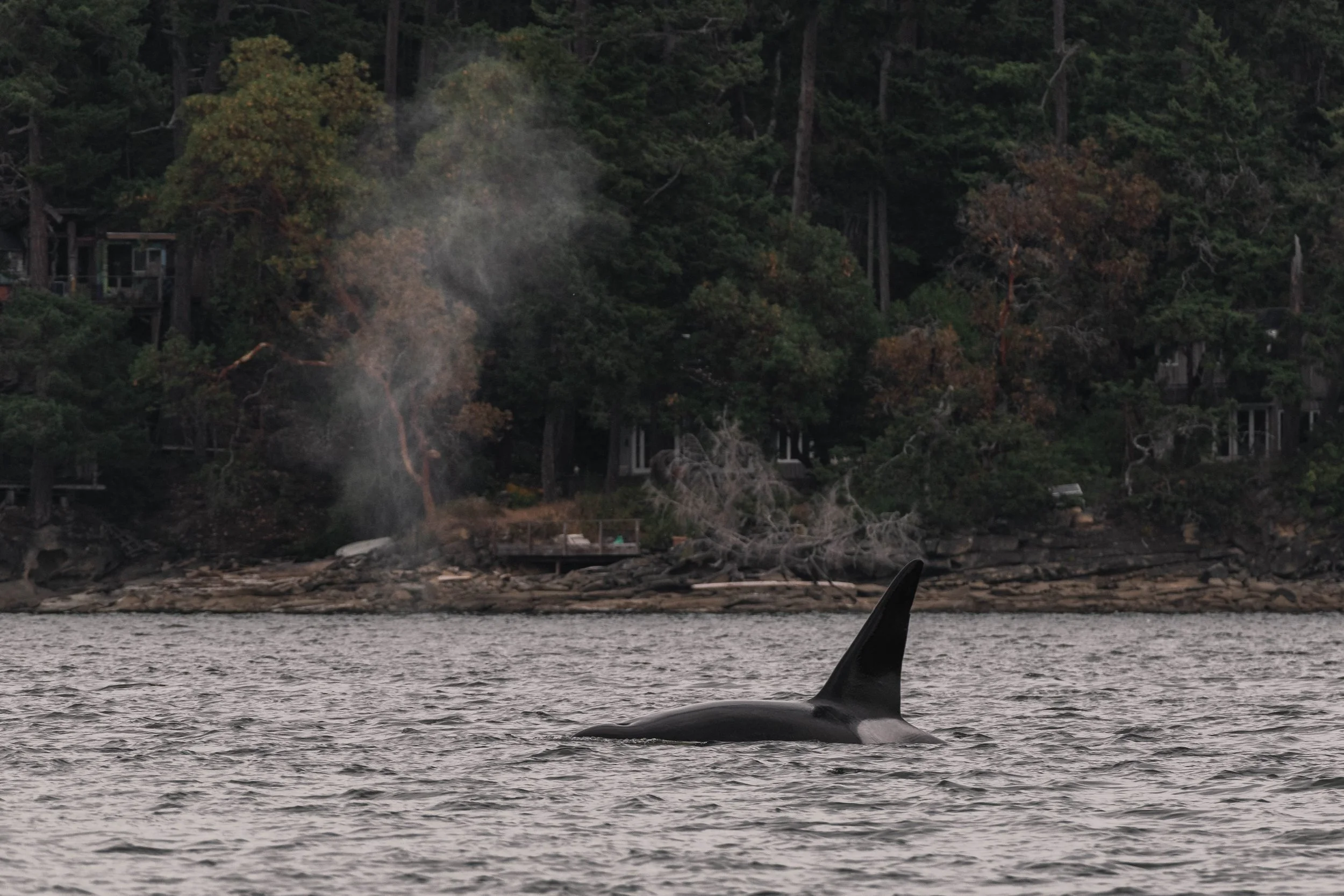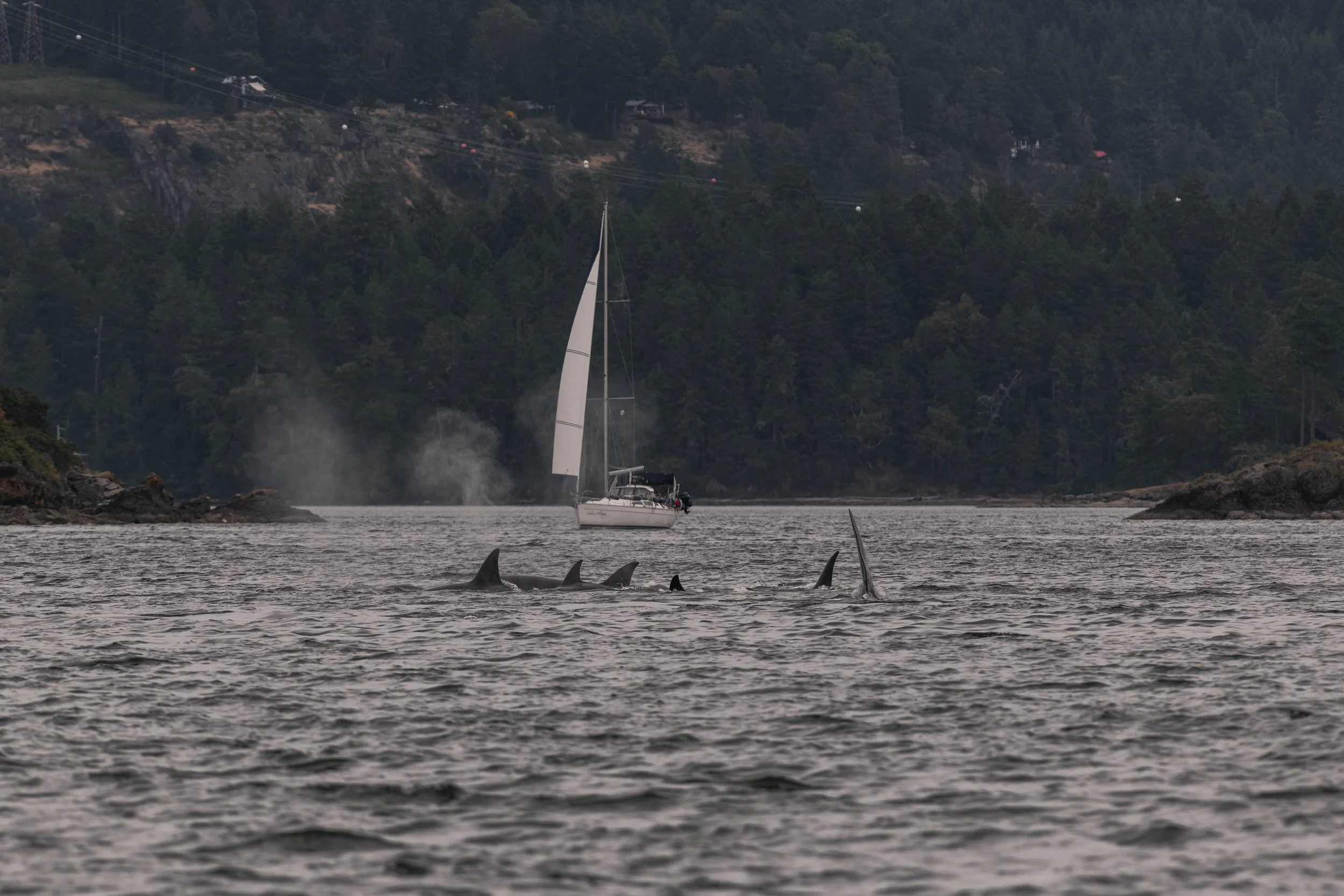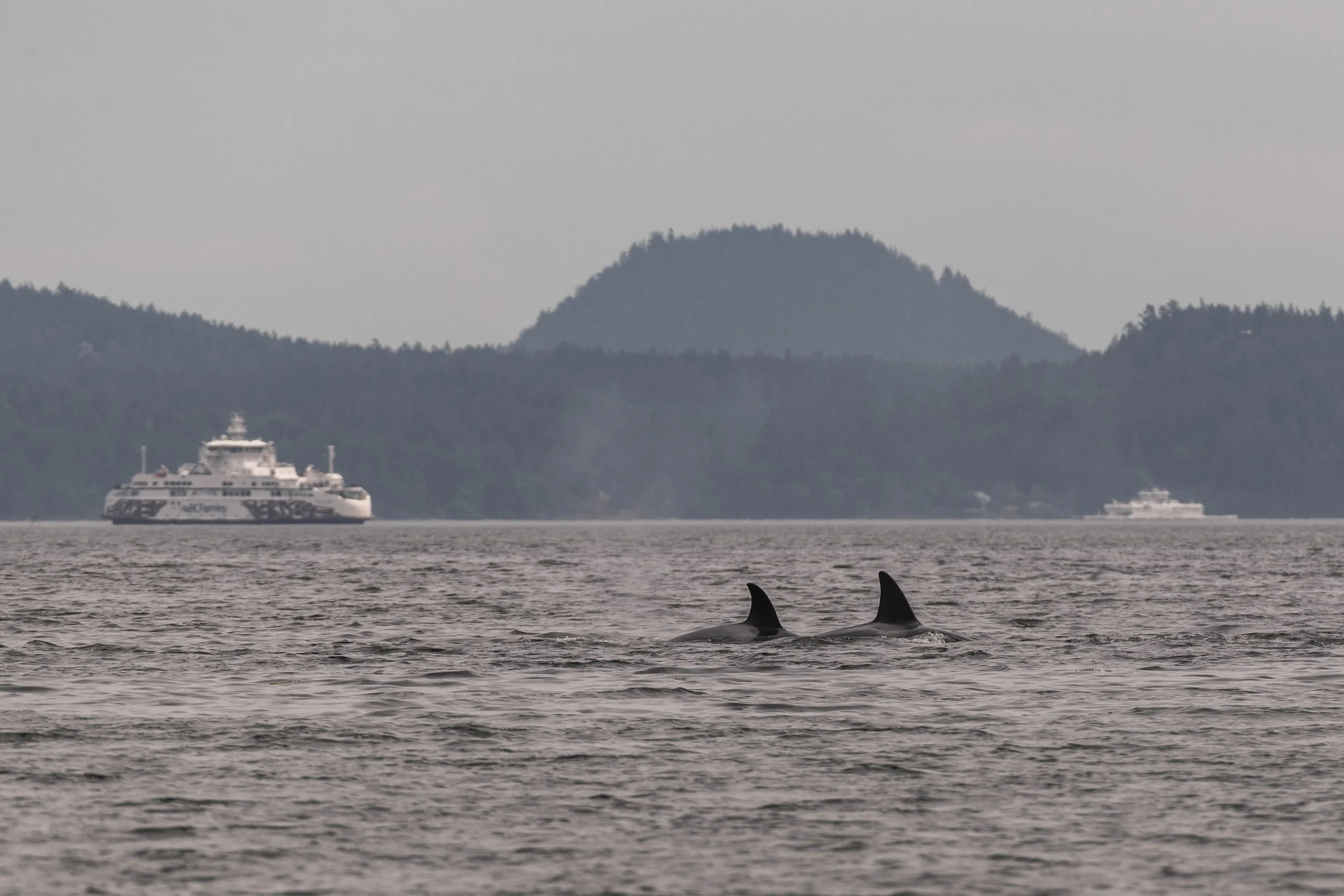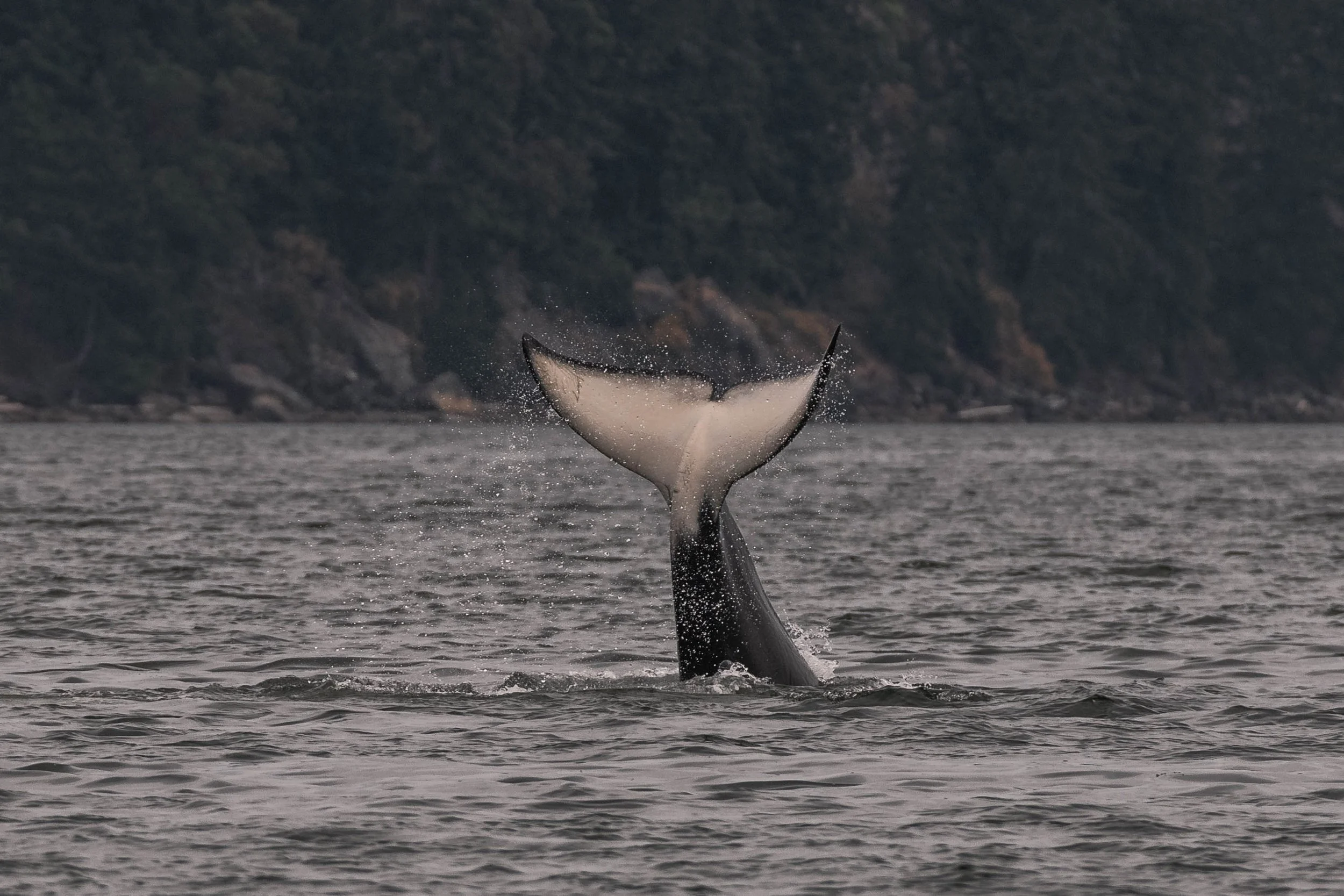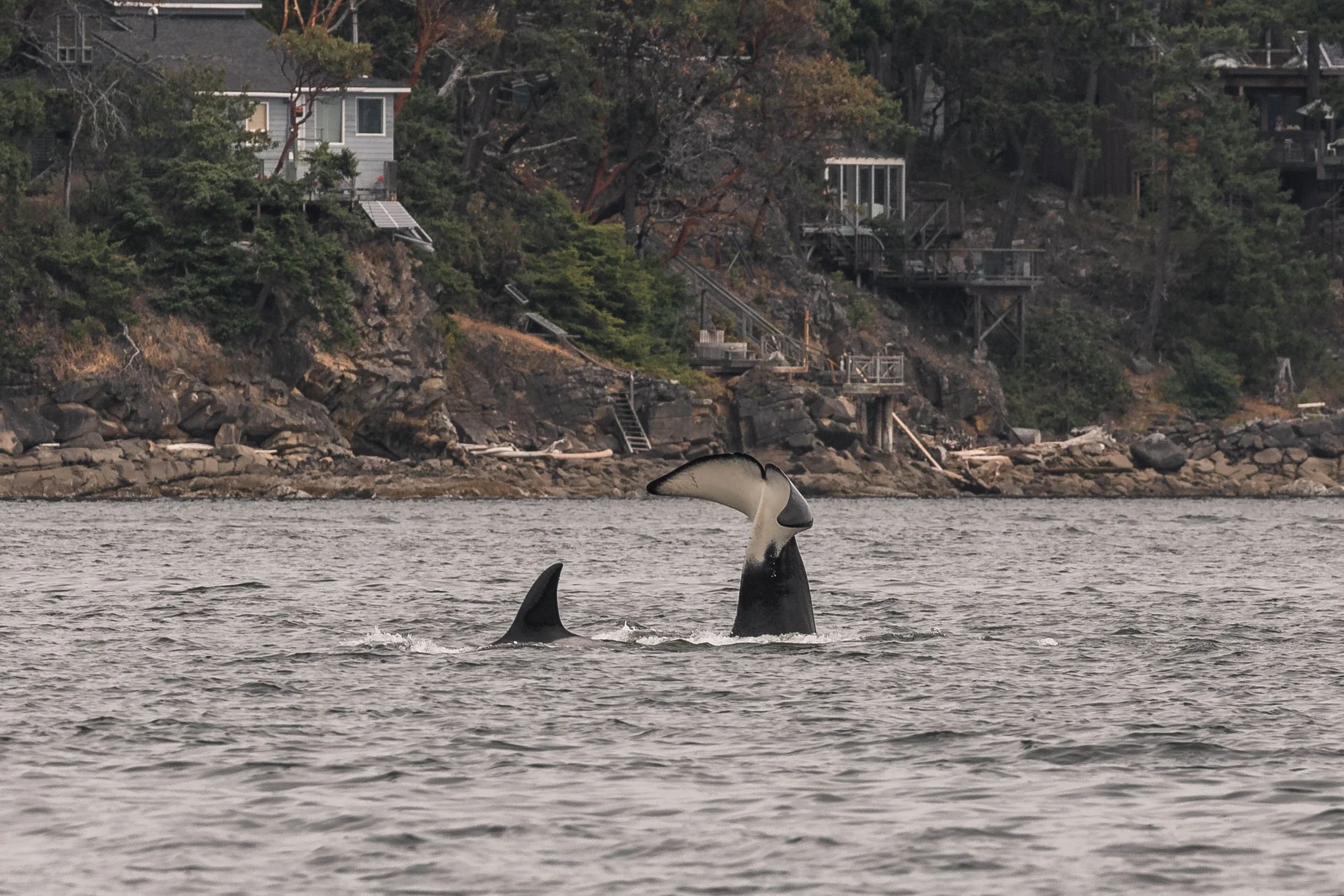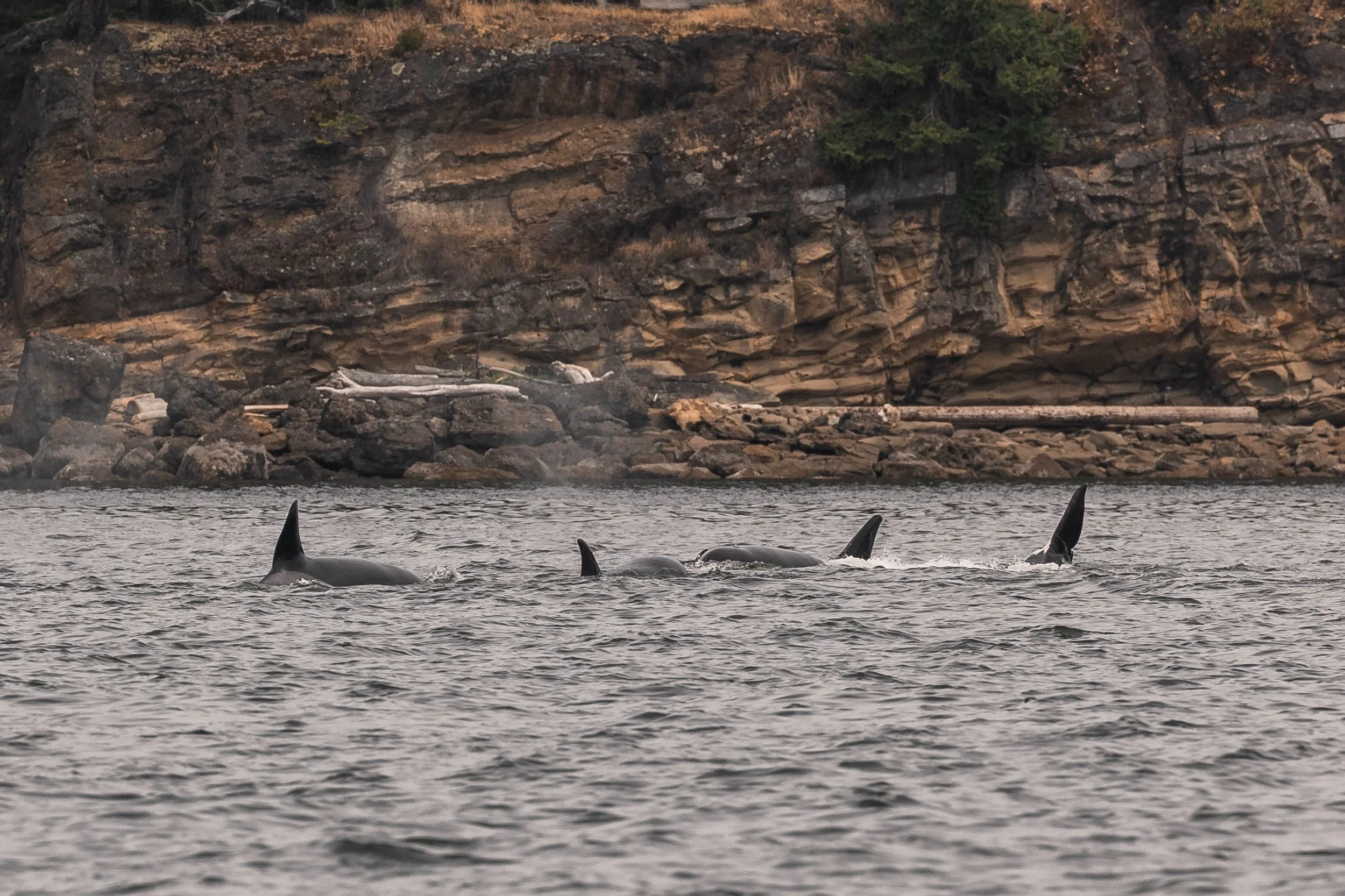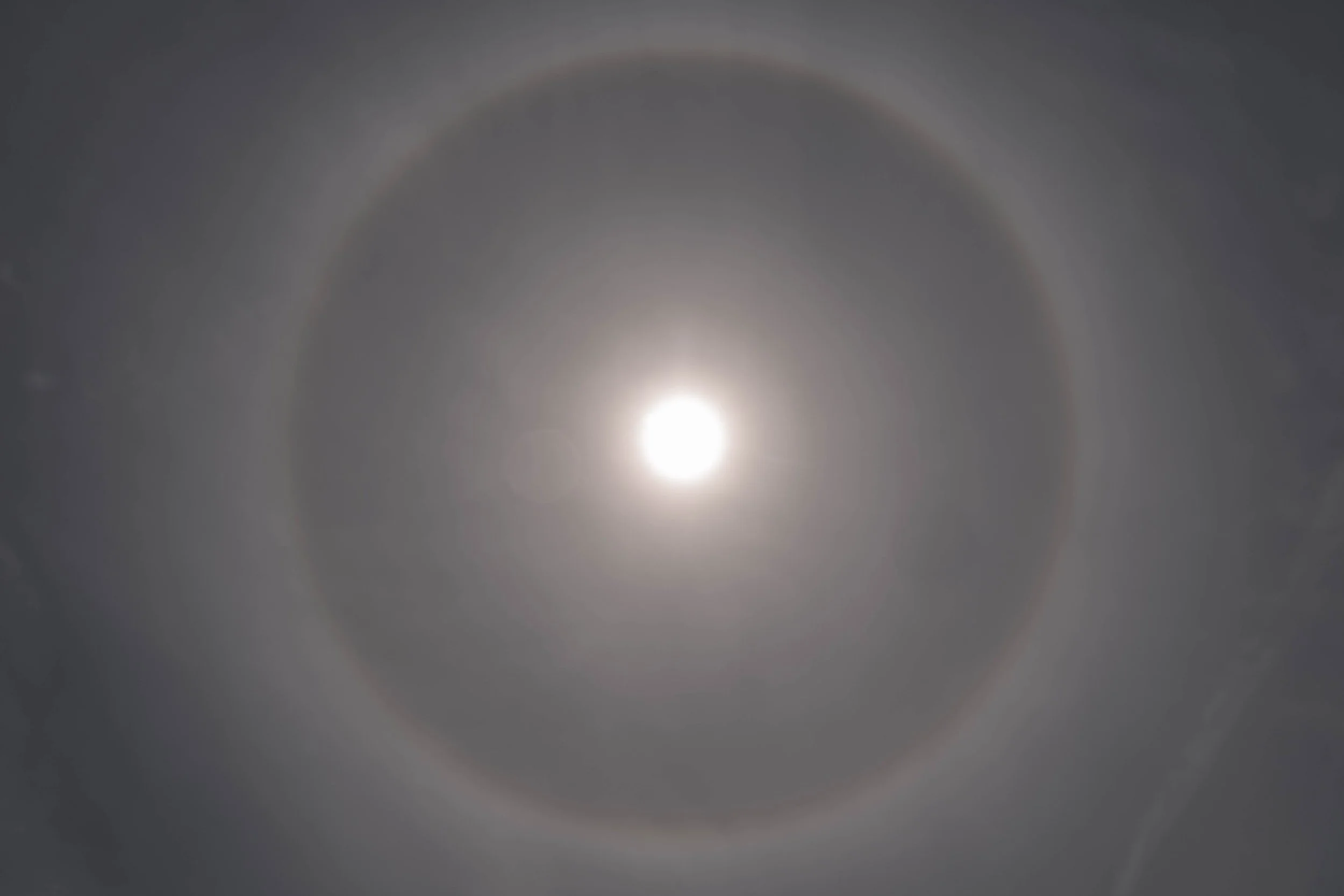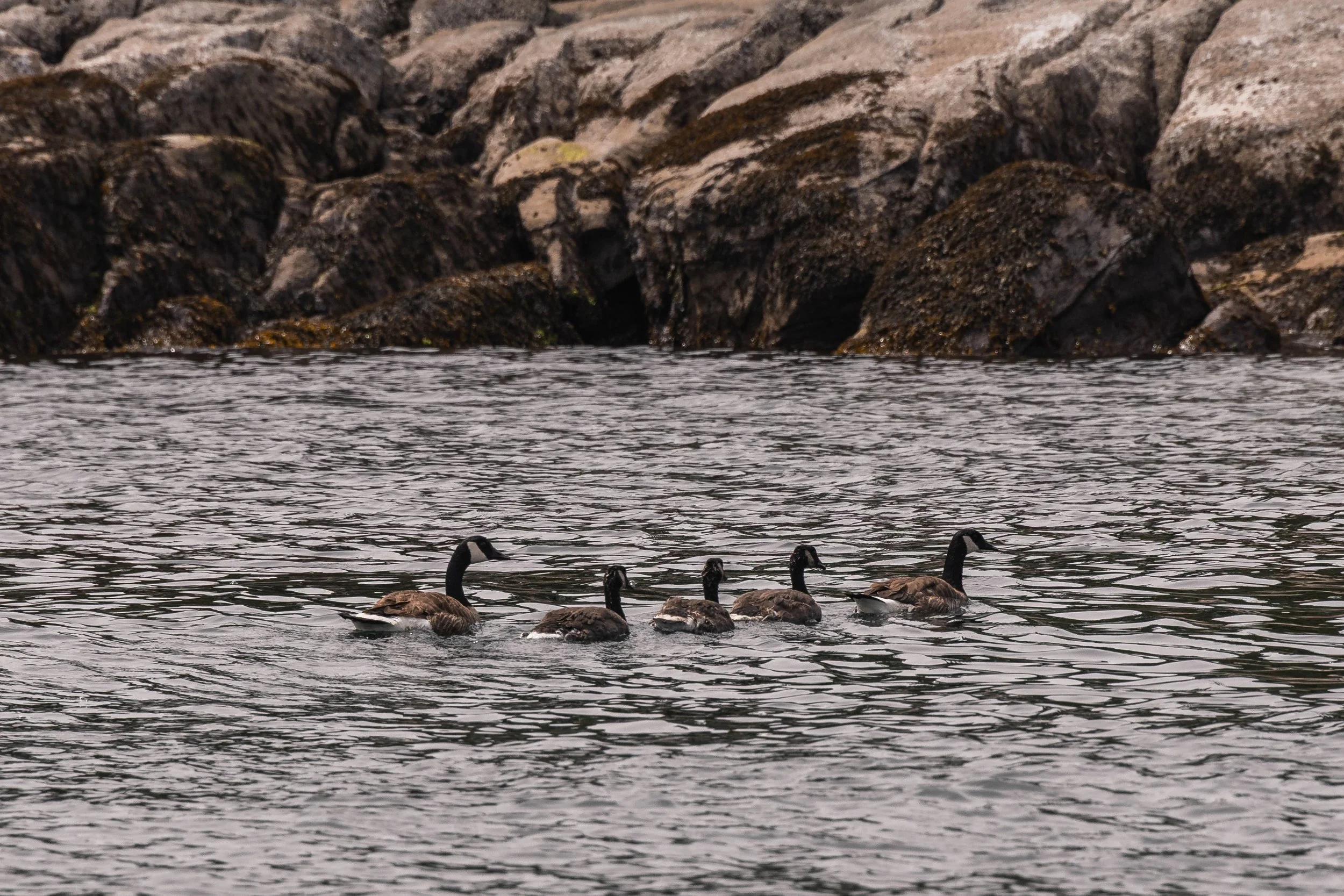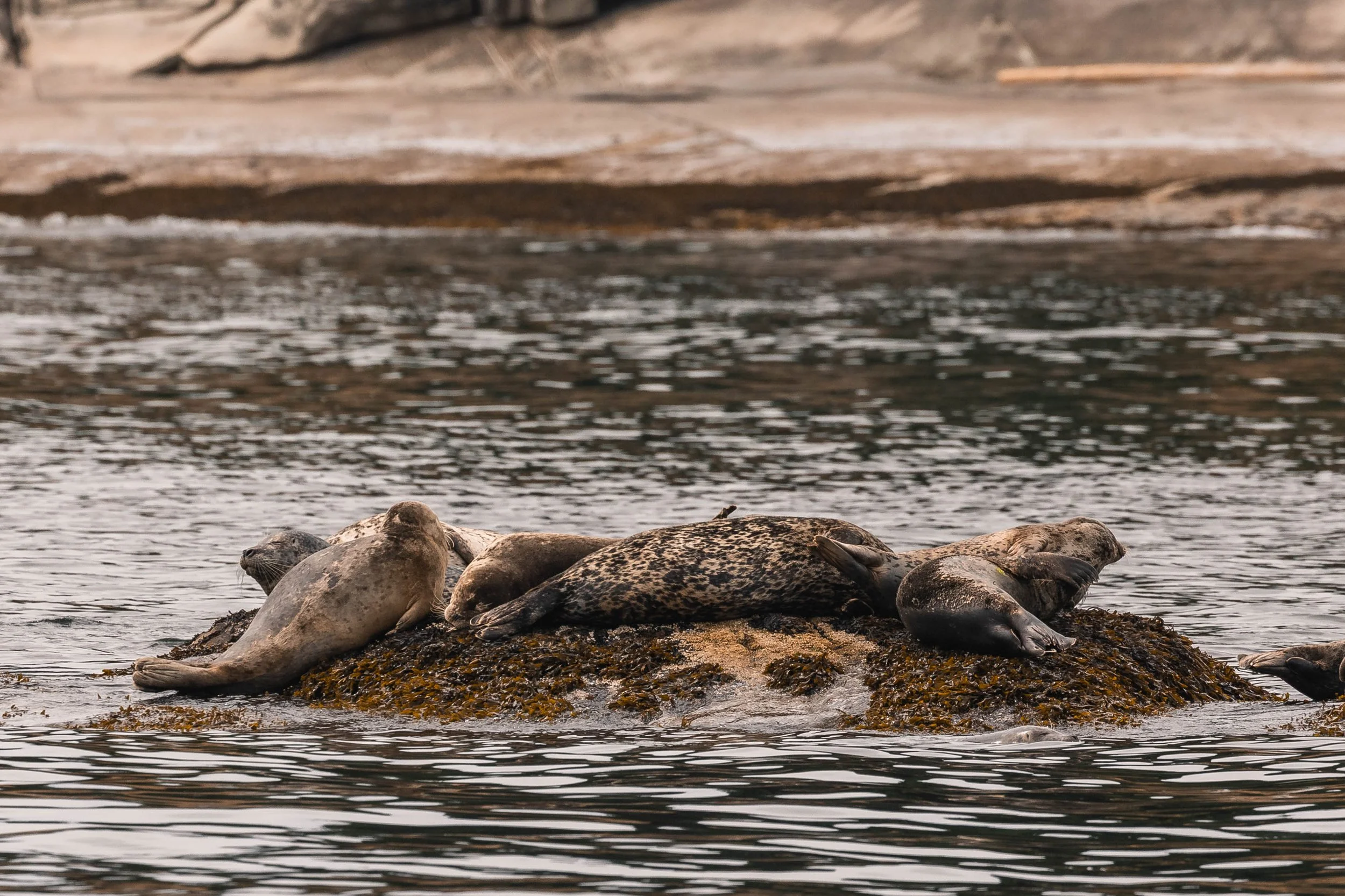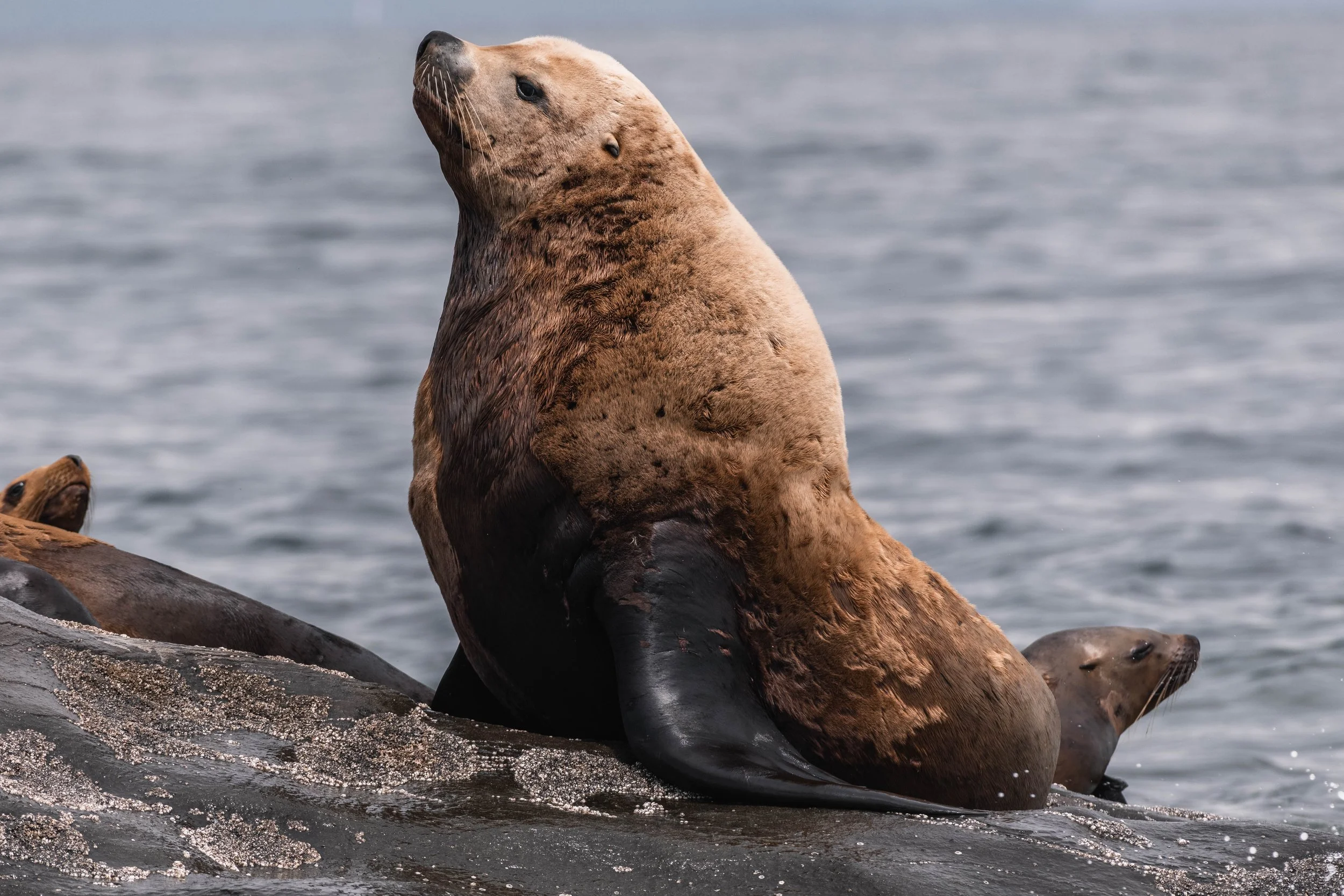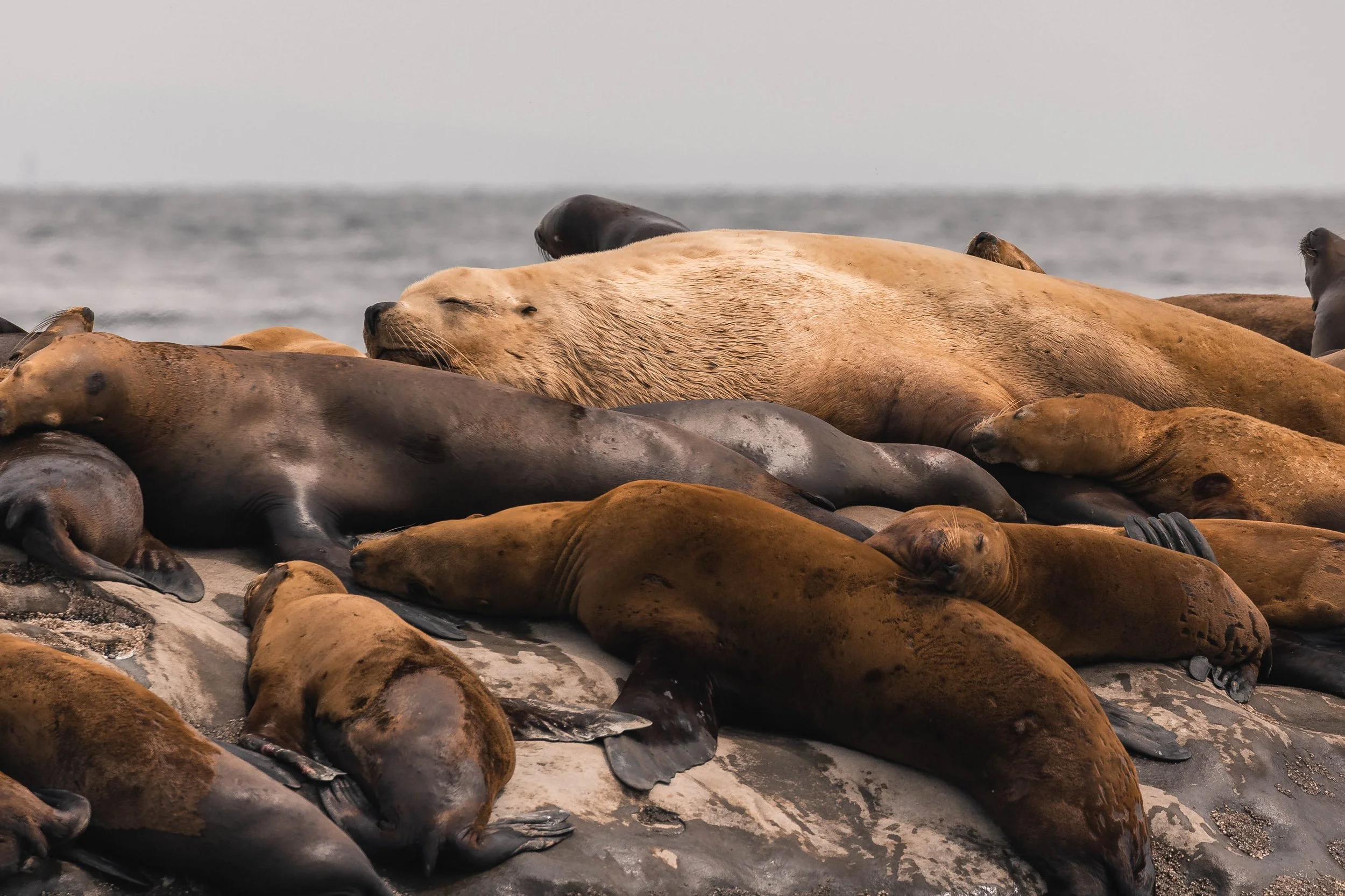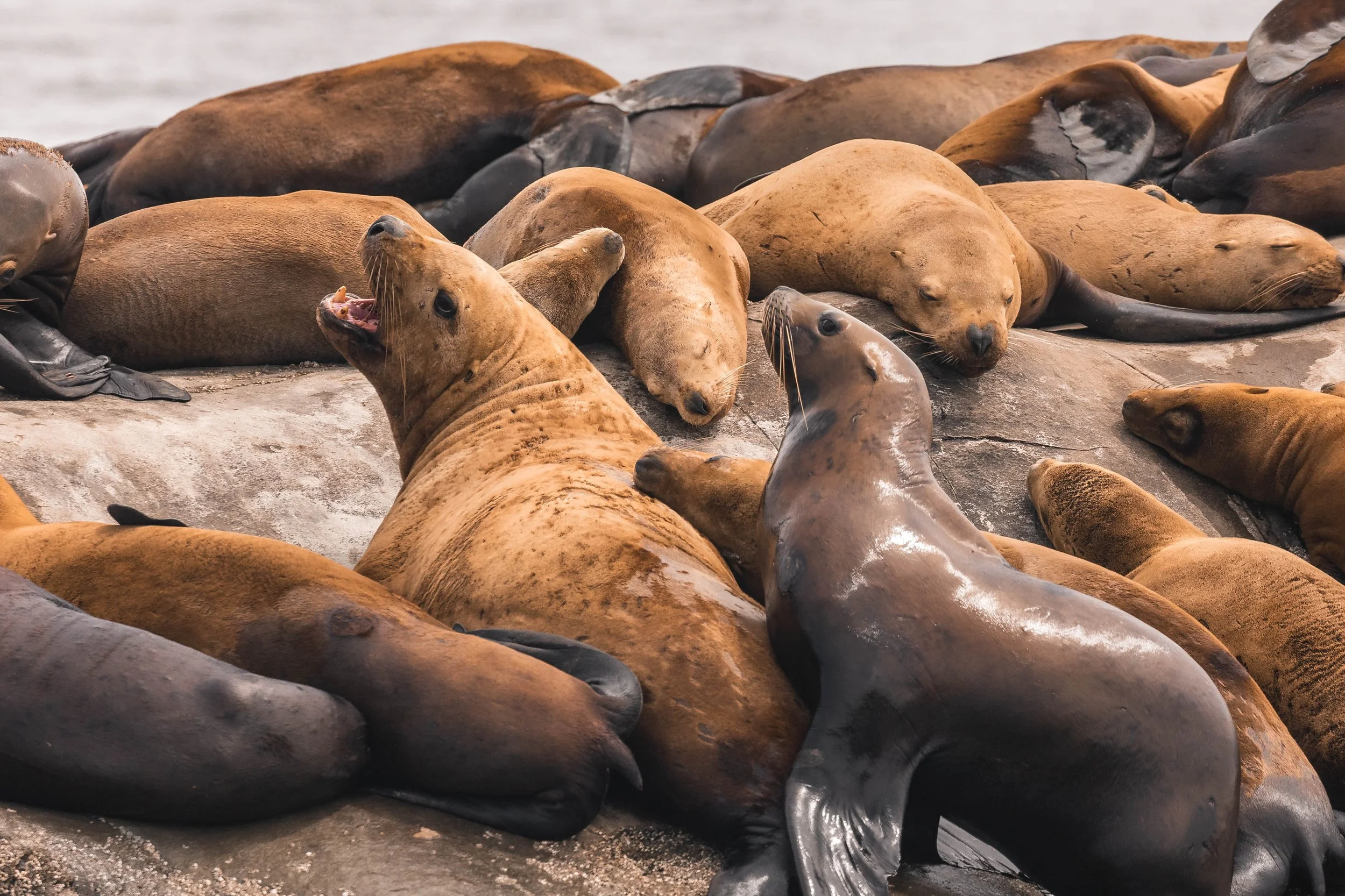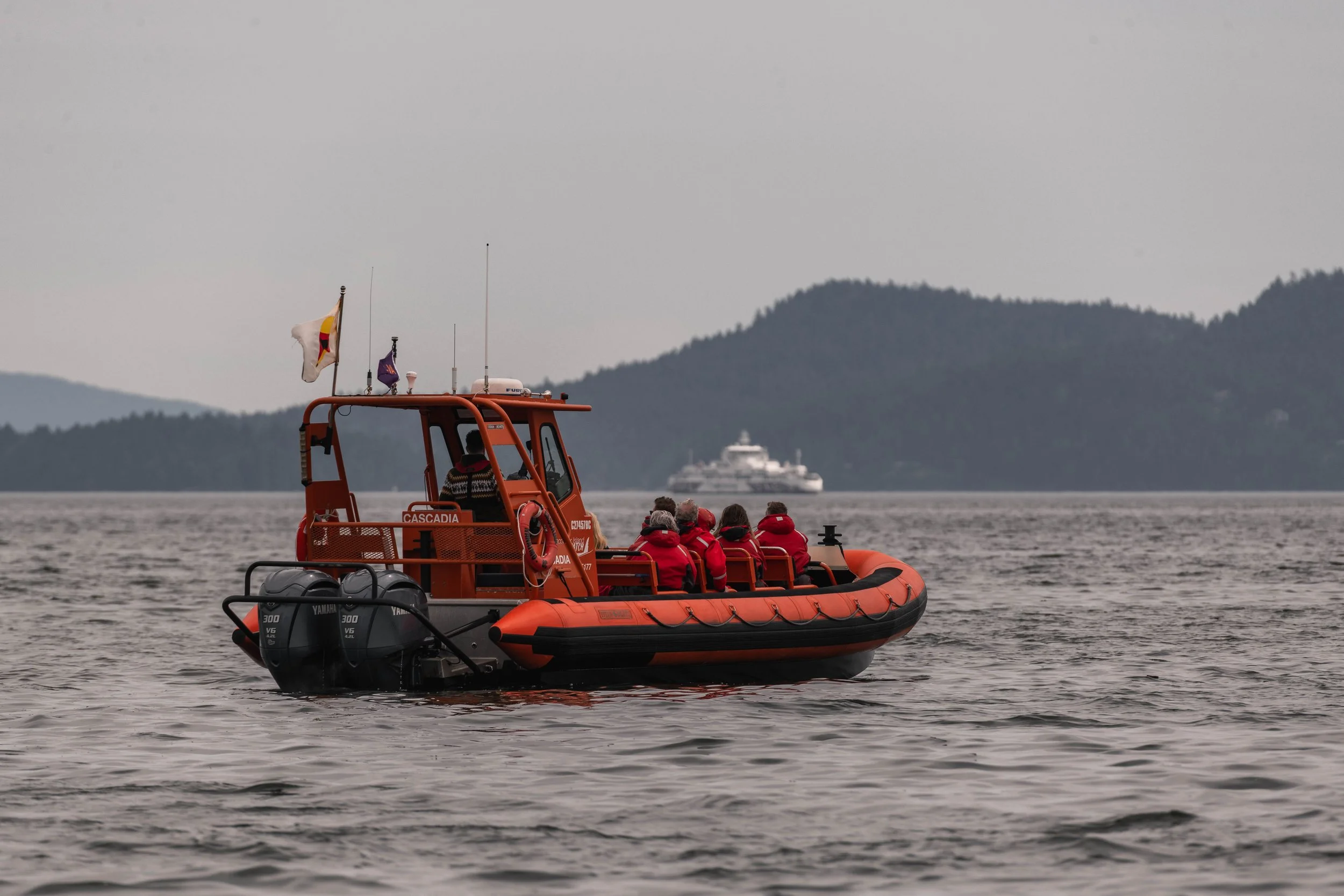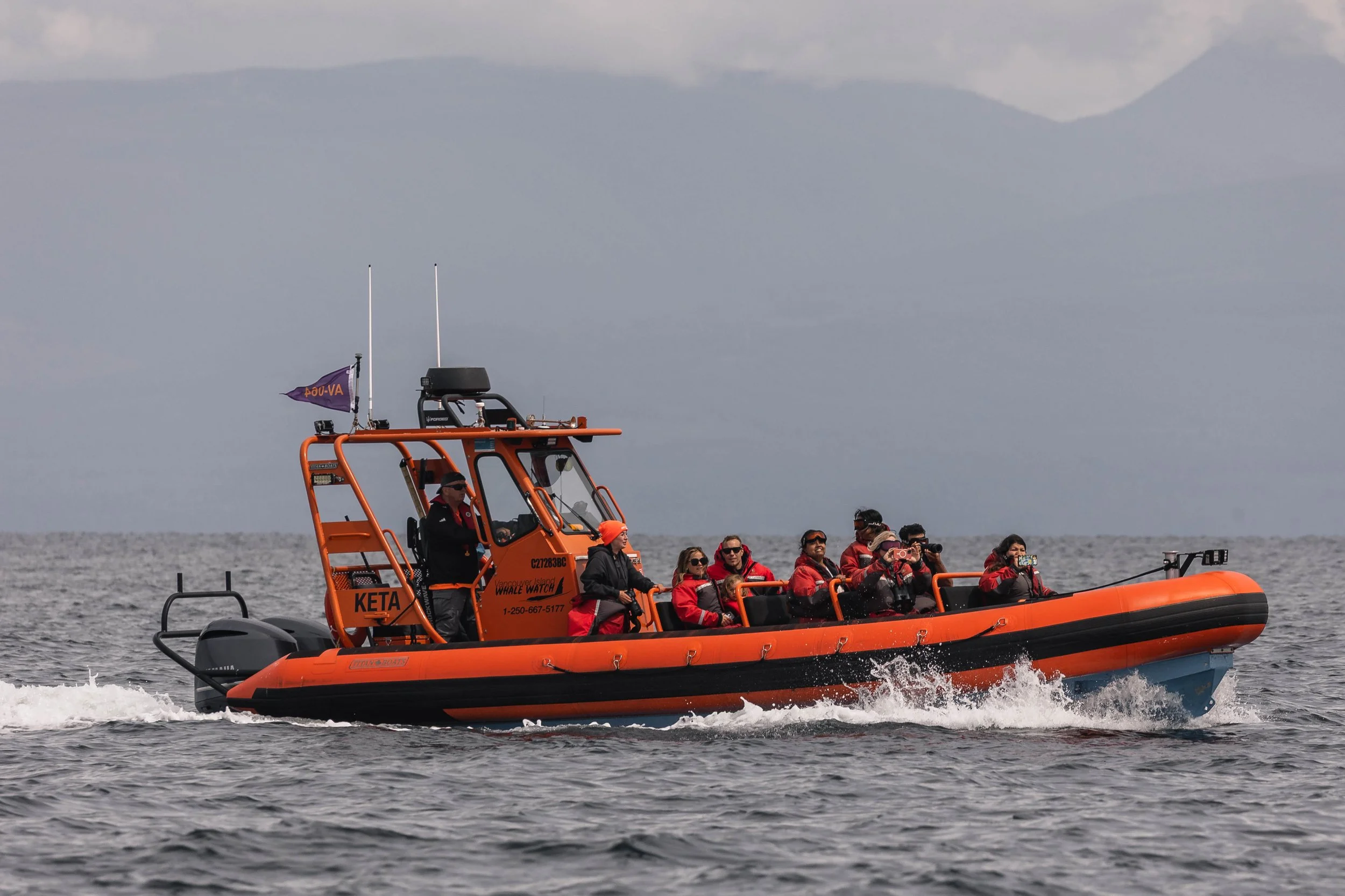July 5, 2025, 10:30 AM - Humpbacks in the SOG and a T-Party in Trincomali Channel!
Our full fleet was out this morning, and our hopes were high as they set off and began our search. Our three vessels spread out to cover more area, and all eyes were peeled on the horizon. All of our whales are free of trackers and tags, so you never know where they will be once you are out there. The search continued, everyone scanning back and forth, until suddenly, several blows, dorsal, and flukes were spotted! There was a small congregation of humpbacks north of Gabriola Island.
We began the exciting task of identifying our four individuals, snapping photos of their dorsal fins and flukes. Thankfully, they were all highly cooperative, leading to perfect shots to cross-match to our ID catalogues. These four were identified as Smoke/Squirrel (BCX2183), Chandelle (BCX2140), Crevasse (BCX2054), and Pingu (BCY1110). They were travelling in 2 separate pairs fairly close to each other - Smoke was travelling with Chandelle, and Crevasse was travelling with Pingu, respectively. Our vessels spent some time with both pairs, watching as they dove and fluked and briefly came together side-by-side.
There are a lot of things about humpbacks that are still shrouded in mystery, and social dynamics is one of those big topics. Within the last 10 years, we believed humpbacks to be fairly solitary animals, with most of their sightings being single individuals travelling alone. Now, it is becoming increasingly uncommon to see a humpback truly travelling solo, and we more often see them travelling in pairs, trios, or quartets. Hopefully, as we continue to study and observe these gentle giants, we will learn more about how they interact with their fellow humpbacks!
Last July, Smoke made headlines when he became heavily entangled in prawn gear near Campbell River. Thankfully, the Marine Mammal Rescue team was able to step in, aiding Smoke in disentangling and setting them free. Entanglements are sadly becoming quite common on our coastline as our humpback whale population continues to grow. If you are ever watching whales in British Columbia’s waters and you happen to spot an entangled whale, please call the BC Marine Mammal Response Network (Observe, Record, Report) at 1-800-465-4336 with your coordinates and any further information you have regarding your sighting to help conserve and protect our whales.
While our two open vessels, Cascadia and Keta, were enjoying their time with Smoke, Chandelle, Crevasse, and Pingu, our semi-covered vessel Kula was having a bit of a different experience with another humpback close to Halibut Bank. They were with Chi (BCZ0575), the 2021 calf of Zephyr, a frequently sighted female humpback in our area. Chi was originally travelling and meandering along like a normal humpback, but then their behaviour suddenly changed. They became very interested in Kula and came up to observe the boat. This behaviour, known as mugging, can be very dangerous for our whales and is never encouraged. Chi took a couple of peeks at us, as well as slapped their pectoral fins at the surface of the water while we observed them. Once Chi was a safe distance away from us, the engines were started back up and Kula moved along, heading over to have their own sighting with the quartet of humpbacks.
Once they had their fill of humpback activity, the fleet departed, heading over to see a different kind of marine mammal. Our adventures took us over to Stinky Rocks - a small group of rocky islets aptly named for their pungent aroma. Here two other common species in the Salish Sea were found - a bob of Harbour Seals and a large haulout of Steller Sea Lions. The quiet and docile seals were busy snoozing away in the sunshine, with not a care in the world… unlike the Steller Sea Lions. Our sea lions are constantly posturing on each other, asserting dominance and demanding respect for their little corner of the rocks. This results in a lot of rambunctious activity, from grumbling and growling to biting and sometimes full-on brawling.
After departing our pinnipeds, the search for more whales was back on - this time, hoping to locate some orca! After some searching, we peeked around and ended up inside the Southern Gulf Islands. We ended up in Trinchomali Channel, one of the main waterways that connects the northern and southern ends of the Southern Gulf Islands, and that’s when the partying began! Tall blows and black dorsal fins were spotted, and suddenly there was a T-party (a group of multiple families of Transient orca together) ahead!
These whales were busy rolling around and tail slapping, but thankfully, we were able to get some clear dorsal photos for ID purposes. These whales were with the T036As, T099s, and T123s:
T036A Leland ♀ (1990)
T036A1 Tierna ♀ (2005)
T036A1A Drift ♂ (2022)
T036A2 Kailas ♀ (2012)
T036A3 Storm/Mike III ♂ (2015)
T036A5 Squall ♂ (2021)
T099 Bella ♀ (1984)
T099B Holly ♀ (2007)
T099C Barakat ♂ (2009)
T099D Puck ♀ (2015)
T099E Qwiin qwiin oo qwii la ♀ (2021)
T123 Sidney ♀ (~1985)
T123A Stanley ♂ (2000)
T123C Lucky ♀ (2012)
T123D Darcy ♀ (2018)
These whales were extremely active as we observed them. They were playfully chasing each other, tail slapping, porpoising, spyhopping, and rolling around. Touch is a huge part of orca society, so get-togethers like this are vital! T-parties are also important for another reason - they are the perfect opportunity for mature whales to mate and start the next generation of orca. While two of these pods are believed to be related (the T036As and T099s), the T123s are not, and T123A Stanley is a perfect potential mate for any of the mature females from the two other pods! T099C Barakat is also old enough now that he may try to make a move on a potential lady soon as well. It’s important to note that male orca do not help raise their own offspring, but they do help their mothers raise their younger siblings - a very interesting dynamic if you ask us!
Soon we had to depart the party and start making our way to Nanaimo. Wrapping up an incredible day, after seeing 20 different whales in a single trip and having a wonderful double-species-filled day, the fleet began cruising back into the harbour.
Please enjoy these photos by Marine Naturalists Aly Kohlman, Jordan Robinson, and Hayleigh Hilbert!
Three membesr of the Humpback quartet! Pingu (back), Chandelle (middle), and Crevasse (front). Photo by Aly Kohlman.
Smoke/Squirrel’s fluke. Photo by Aly Kohlman.
Chandelle’s fluke. Photo by Aly Kohlman.
Crevasse’s fluke. Photo by Aly Kohlman.
Crevasse’s fluke with Entrance Island behind them. Photo by Hayleigh Hilbert.
The top of Pingu’s fluke. Photo by Aly Kohlman.
Pingu’s fluke. Photo by Aly Kohlman.
Pingu’s dorsal fin. Photo by Hayleigh Hilbert.
Pingu preparing to dive. Photo by Hayleigh Hilbert.
Pingu’s fluke. Photo by Hayleigh Hilbert.
Chi flinging their peduncle around. Photo by Aly Kohlman.
Chi throwing their weight around! Photo by Aly Kohlman.
Chi’s dorsal fin. Photo by Aly Kohlman.
Chi’s chin popping above the surface. Photo by Aly Kohlman.
T099 Bella with her face above the surface! Photo by Aly Kohlman.
Party time with the orca! Photo by Aly Kohlman.
One of the young ones rolling around. Photo by Aly Kohlman.
T099E Qwiin qwiin oo qwii la close to another. Photo by Aly Kohlman.
T123A Stanley. Photo by Aly Kohlman.
T099 Bella in the middle with two others on either side of her. Photo by Aly Kohlman.
T123C Lucky, T099E Qwiin qwiin oo qwii la, T123 Sidney, T099 Bella, T099C Barakat, and T123A Stanley. Photo by Aly Kohlman.
Look at all this intense scarring! Photo by Aly Kohlman.
T099D Puck with likely T123A Stanley behind him. Photo by Aly Kohlman.
T099B Holly zooming by. Photo by Aly Kohlman.
T099 Bella with her fresh little notch. Photo by Aly Kohlman.
T123 Sidney, T123D Darcy, T123C Lucky, and T099D Puck. Photo by Aly Kohlman.
Upside down on top of a different orca! Photo by Aly Kohlman.
T123C Lucky and T123D Darcy. Photo by Aly Kohlman.
Tail slapping away in the middle of the party! Photo by Aly Kohlman.
T036A2 Kailas. Photo by Aly Kohlman.
T036A2 Kailas (tip of dorsal), T123 Sidney, T036A3 Storm/Mike III, and T123A Stanley. Photo by Jordan Robinson.
T099 Bella with a large male tail (likely T123A Stanley’s) beside her. Photo by Jordan Robinson.
4 orca all coming together! Photo by Jordan Robinson.
A solar halo. Photo by Hayleigh Hilbert.
A gaggle of Canadian Geese. Photo by Hayleigh Hilbert.
Nap time with our Harbour Seals. Photo by Jordan Robinson.
A massive (and chunky) Steller Sea Lion male. Photo by Aly Kohlman.
A huge male Steller Sea Lion rests at the top of Stinky Rocks. Photo by Jordan Robinson.
Grumbly growling cuddle puddle of Steller Sea Lions on Stinky Rocks. Photo by Jordan Robinson.
Our open vessel Cascadia watching the whales. Photo by Aly Kohlman.
Our open vessel Keta. Photo by Jordan Robinson.
Our semi-covered vessel Kula. Photo by Jordan Robinson.

